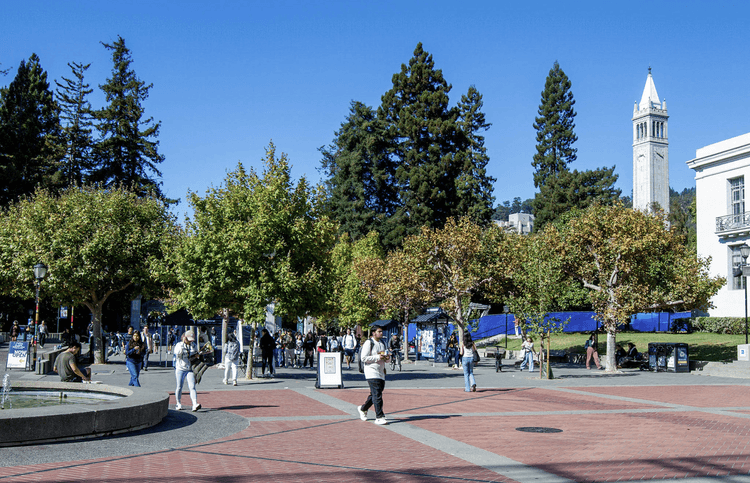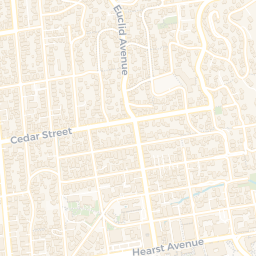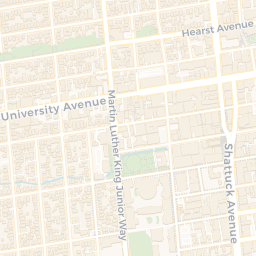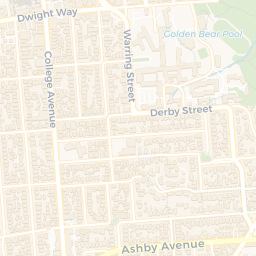What are the busiest classrooms on campus?
We web scraped more than 20,000 undergraduate course listings from 2019 to 2024. See what we found.
June 18, 2025

Cole Mortensen | Senior Staff
UC Berkeley students are familiar with the university’s large class sizes and sometimes unforgiving waitlists. To shed more light on enrollment, accessibility and scheduling logistics, we web scraped classes.berkeley.edu and analyzed more than 20,000 undergraduate course listings from 2019 to 2024. Here’s what we found.
How classes are scheduled
Scheduling classes at UC Berkeley is a decentralized process. Every semester, each department is allocated rooms across the more than 100 buildings on campus, in which they schedule classes. If departments need rooms beyond the allocated space, they can request general assignment rooms, managed by the Office of the Registrar.
According to Adam Ratliff, assistant director of Student Affairs Communications, the Office of the Registrar oversees about 200 of these general assignment classrooms. These classrooms typically accommodate fewer than 50 students, but there are outliers such as Pimentel 1, a large lab-based lecture hall. Classes in chemistry, physics and biology receive priority room assignments there due to its unique setup.
For such departments, the need for specialized classroom setups creates additional bottlenecks. Rachel Leven, director of news and information for the College of Computing, Data Science and Society, noted that Data 8 labs require specific table-and-chair arrangements not available in most general classrooms. This has led the program to reserve specific rooms in Evans Hall for these labs.
Departments are allocated rooms every semester, and the Office of the Registrar assigns extra rooms to fulfill shortages and particular class needs.
Classes throughout the week
Walking through campus, students might encounter hotspots such as Sproul Plaza, Moffitt Library, Wheeler Auditorium and Hearst Mining Circle. Crowds fluctuate across the week and by campus location. To gain further insight into foot traffic on campus, enrollment numbers in each building are mapped as a proxy for student density.
Enrollment in halls by day and hour
Excludes online classes and is restricted to undergraduate classes. As classes.berkeley.edu does not provide 999 section information, the locations and enrollment numbers of these classes are not mapped.
The south side of campus, which includes buildings such as Dwinelle Hall, often hosts large numbers of students. Meanwhile, buildings that host smaller classes are not as centralized and are located scattered throughout campus. Despite fluctuations across the week and different buildings, UC Berkeley certainly houses a diverse range of class sizes throughout its campus grounds.
Class sizes
Mean class size by department
Source: Undergraduate enrollment from Fall 2019 to Fall 2024.
Large class sizes present a serious challenge for many STEM departments such as data science, whose prerequisite Data 8 has become the most popular class on campus. The class enrolls more than 1,000 students each semester despite being scheduled in Wheeler Auditorium, a room with only 700 seats. Leven explained that the data science program has adapted to its growing enrollment by increasing its course offerings and embracing hybrid lectures, allowing more students to enroll than the classroom capacity permits.
Shifting enrollment
While STEM classes are among the largest on campus, departments with smaller class sizes are often more likely to have their classes be fully enrolled.
Despite increasing head counts of students in computer science and electrical engineering and computer sciences, CS 61A, one of the discipline’s introductory courses, has seen a drop in capacity across the past 5 years. From its largest recent enrollment of 1,828 students in fall 2019, the class is taken by just 1,240 students this fall — a drop of just over 32%.
The data science department, which first started offering courses in 2015, has seen steady growth in enrollment in its short lifetime. However, enrollment in Data 8 has also fallen in past years, from a peak of 1,948 in fall 2022 to 1,263 in fall 2023. Enrollment in Data 8 rose to 1,476 in fall 2024 but still falls short of the fall 2022 peak. Both data science and computer science were classified as high demand majors in fall 2023, which required students to either list these majors on their UC application or declare through a holistic review process. According to a slide from professor John DeNero’s informational town hall in fall 2023, which has since been deleted, only 99 students were admitted as intended computer science majors, a drop from 363 the previous year.
Enrollment in English 45A, one of the requirements for the English major, has also reflected trends in department enrollment. UC Berkeley saw a drop in its number of English majors with the onset of COVID-19, but numbers have been climbing steadily since then.
Class enrollment and capacity for Data 8
- Enrolled
- Capacity
From the residential areas of Berkeley to the heart of campus, the university hosts classes numbering in the tens to thousands of students. Every semester, scheduling these classes is an administrative rite of passage for the university.
The tide of students may ebb and flow, but campus traffic remains an enduring aspect of the UC Berkeley experience.
Note: Not all classes and sections have location information available on classes.berkeley.edu, either because they are coded as 999 (a placeholder location common in CS and DS classes) or the data was not available. This leaves out roughly 5 percent of student attendance for the map visual.
About this story
This project was developed by the Data Department at The Daily Californian.
Data from this project came from Berkeley Academic Guide.
Questions, comments or corrections? Email projects@dailycal.org. Code, data and text are open-source on GitHub.
Support us
We are a nonprofit, student-run newsroom. Please consider donating to support our coverage.
Copyright © 2025 The Daily Californian, The Independent Berkeley Student Publishing Co., Inc.








